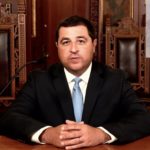
Grant helps UW hunt for treatments for cancer-causing virus
MADISON, Wis. — It’s nearly gun season for whitetail deer in Wisconsin, but researchers are hunting for something else.
Buoyed by a grant from the Lymphoma and Leukemia Society, Bill Sugden’s personal goal of impacting cancer may be a little closer to reality. The $430,000 grant will fund a year’s worth of compound screening in the search of a possible treatment for the cancer-causing Epstein-Barr Virus (EBV).
Sugden, a professor of oncology at the University of Wisconsin-Madison, will leverage the high-throughput Small Molecule Screening and Synthesis Facility at the UW Carbone Cancer Center to screen nearly 300,000 molecules. He’s looking for a compound that can do one thing: inhibit the formation of a single, special protein essential in the virus’s replication.
EBV has been proven to cause several types of cancer, such as Burkitt’s Lymphoma and nasopharyngeal carcinoma, a cancer of the upper-most section of the throat. Part of the UW McArdle Laboratory for Cancer Research, Sugden has been studying the virus for more than 40 years, learning how it works and probing it for weaknesses. A virus in the herpes family, EBV is one of the most common viruses in humans, and in most instances the viral infection is kept in check — but not eliminated — by the immune system.
But unlike HPV or the Hepatitis B virus, common vaccine strategies aren’t an option. Most viral vaccines use an inactive fragment of a virus’s protective shell to initiate an immune response, but the strategy isn’t effective with viruses from the herpes family. The biology behind why isn’t understood, but Sugden found another target to explore.
EBV replicates inside a host cell by using a mixture of mechanisms from the host and the virus itself. Having closely studied the process of EBV’s replication, Sugden has identified a specific protein encoded by the virus that is essential to the entire replication process.
“That’s what we are trying to attack,” said Sugden. “We can’t inhibit it once the virus forms this protein — once formed, that protein is as stable as a rock — so what we’re trying to do is find small molecules that get into the cell and inhibit its formation. If that happens, we know that the viral information of the tumor cell will be lost.”
Sugden doesn’t expect to unearth a therapy in the next year. But of those 300,000 compounds, he’s hoping that perhaps one percent of them will pass the first test. Through subsequent tests — four screenings in all — Sugden and his team will expose compounds to more and more selective requirements in the hope they’ll find a few winners in the end.
“If any molecules pass through all four screens, they’re really doing what we want them to do. I’m hoping we’ll get some compounds that make it all the way,” he said. “If we got 10, I’d be ecstatic, but I’m not worried about having too many — I’m worried about having too few.”
At that time, they’ll do more informative experiments to determine what each of these compounds has in common and ultimately attempt to make more effective derivatives.
“Can we get there in a year’s time, no, but we can probably get to a point where we can start exploring derivatives within a year’s time,” said Sugden. “We couldn’t do any of that without the grant. We’ve developed the assay on the lab bench, but we couldn’t do this without devoting a large amount of resources and time. That’s what the grant will allow us to do.”
-end-





